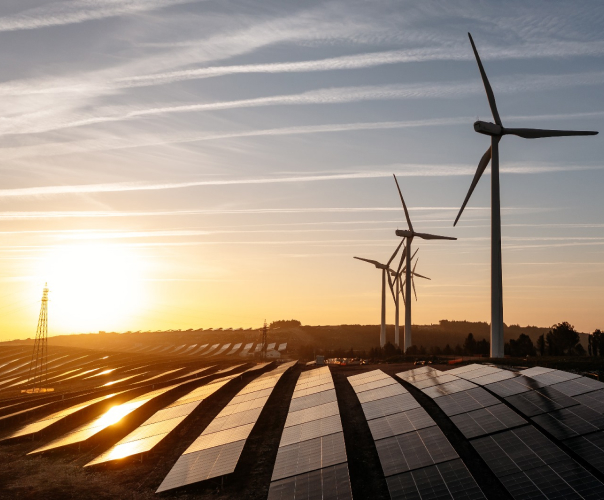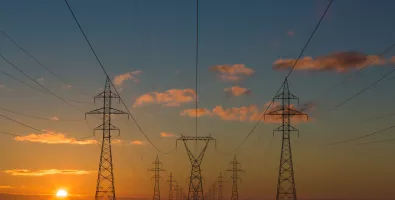
Adaptation to climate change
Our commitment to adapt
It aims to improve the resilience of EDP’s infrastructures to climate change. Climate change became a reality and its effects are already being felt across the globe. Under the adaptation priority, EDP is assessing the level of exposure of EDP’s infra-structures to climate physical risks, considering the short, mid and long-term IPCC scenarios downscaled when possible to regionalised scenarios.

We commit to have adaptation plans in our business units by 2025
| Chronic Physical Risks | Potential business impact | Acute Physical Risks | Potential business impact |
| Temperature increase |
| Extreme Event: Wind |
|
| Sea Level Rise |
| Extreme Event: Rain | |
| Water Availability |
| Extreme Event: Wildfires |
|
| Wind Availability |
| ||
| Extreme Hot Days |
| ||
| Extremely Cold Days | |||
Business Activities | ||||||
| Physical Risks | Hydro Generation | Wind and Solar Generation | Transmission/ Distribution | Client Solutions | ||
| Chronic | Temperature increase | Brazil | ||||
| Sea Level Rise | Portugal | Spain | Iberia | Iberia | ||
| Water Availability | Iberia | |||||
| Wind Availability | EDPR | |||||
| Acute extreme events | Hot days | Iberia | EDPR | Iberia | Iberia | |
| Cold days | EDPR (mainly USA) | Spain | beria | |||
| Storms (incl. wind and rain) | Iberia | EDPR (mainly USA) | Iberia + Brazil | Iberia | ||
| Wilfires | Iberia | EDPR (mainly USA) | Portugal | Iberia | ||
| High level risk, followed at corporate level and with need of mitigation measures being planned and implemented at business unit level | ||||||
| Low level risk, being followed and revised periodically at business unit level | ||||||
| Exposed to risk, but without significant quantification | ||||||
| Not applicable or negligible to the business workstream | ||||||
- Reinforcement of emergency response, including greater involvement with the authorities and security forces, to improve the response to extreme phenomena.
- Revision of the dam safety plan to ensure the safety of assets and neighboring populations (Brazil).
- Investment in downscaling climate data, to increase knowledge and better assess the impacts of climate change on hydroelectric power.
- Investment in water efficiency programs for assets located in water-stressed regions.
- Development of real-time flood forecasting systems.
- Development of landslide risk maps to better define priority interventions.
- Promoting nature-based solutions through forest planting to correct slopes and regulate the hydrological cycle.
- Improving the response capacity of the protection equipment of the hydraulic circuits of the generator sets to the increased intensity and frequency of extreme phenomena (e.g. rainfall and greater intensity of fires).
- Adapting the design of EDPR's facilities to suit existing conditions, in order to adapt assets to specific weather situations.
- Reinforcement of emergency response measures, such as fire walls, water collection and self-protection measures.
- Installation of geomembranes in some facilities to protect the soil, in order to control the level of erosion and prevent landslides caused by heavy rainfall and flooding.
Greater involvement with suppliers to ensure the resilience of assets, through the analysis and selection of specific models.
Strengthening the resistance of equipment to cope with extreme events:
- Protection system on turbines against ice formation;
- Protection measures for turbines against extreme winds, through the tilting system and braking and stopping systems;
- Improvement of the turbine cooling system to allow it to operate at higher temperatures or installation of insulation in the nacelle for better performance during cold days;
- Lightning protection systems in the turbines to avoid fire situations;
- Mitigating the impact of hail on solar panels: adjusting the thickness of the panels and positioning the structures to protect them from the direction of impact.
- Engagement with local authorities to promote climate change adaptation initiatives, aligned with local priorities, capable of protecting/strengthening electricity grid infrastructure.
- Increased investment in vegetation management strips for infrastructure protection, compatible with forest management, to reduce the risk of fire.
- Replacing conventional grids with compact grids and replacing wooden poles with conventional power poles to reduce their exposure to extreme events and increase the resilience of grid infrastructures. (Brazil)
- Identification of new materials and construction solutions that improve the resilience of networks to critical climate variables (strong winds and snow).
- Strengthening emergency response through the implementation of contingency plans and the use of meteorological information to support the management of operational teams and ensure their safety.
- Investment in smart grids to improve the response to extreme weather events (fires, lightning strikes, strong winds).
We value international agreements and initiatives
EDP's commitment to the world is to achieve cleaner and greener energy. In addition to decarbonization, we are implementing measures to fight climate change, following the recommendations of the report by the Task Force on Climate-related Financial Disclosures (TCFD) and adhering to numerous international initiatives that promote sustainability.


